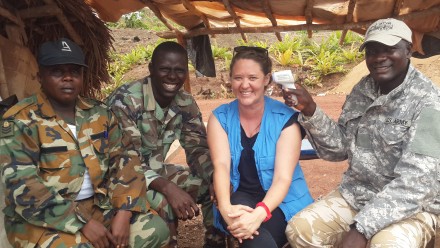Data Analysis in Population Health (DAPH) Hub Seminar: DAPH Show-and-Tell
Share
The Data Analysis in Population Health Hub is a meeting place for sharing methods and expertise in data analysis. We collaborate on projects across RSPH and beyond, to ensure that the most appropriate methods are used to answer research questions of interest.
This session showcases a variety of analyses and methods taking place across RSPH and beyond, and will be chaired by Dr Erin Walsh.
Average Treatment Effect, or Average Treatment Effect of the Treated?
In two studies on prescription drug exposures during pregnancy, different approaches were taken in developing analyses of neurodevelopmental outcomes in exposed children. The divergent methods were a result of deliberate choices related to the fundamental research question in each case, resulting in one study revealing the ATE for the drug exposure, and the other the ATT. The process leading to these different approaches and when to choose methods tailored to the calculation of ATT or ATE will be described.
By Associate Professor Dan Chateau.

A new approach for measurement invariance for questionnaires
Questionnaires are essential in epidemiology to gather demographic information, investigate physical and mental health, and understand abstract concepts like personality traits and political views. Yet, the validity of these questionnaires by sex, gender, age or ethnic background is often overlooked. This talk provides a framework to assess the validity of questionnaires in different population settings using measurement invariance with confirmatory factor analysis.
By Ms. Daniela Espinoza Oyarce.

Location in research: Real world examples
A brief overview of GRAPHC’s involvement in the creation of interactive COVID-19 dashboards for the CRISPER project and in the analysis of Suicide locations for the LifeSpan project.
By Mr Michael Hewett.

Creating a matched control sample using population datasets
Research often makes use of subsamples within population datasets to study phenomena of interest, such as a life stage (e.g., retirement) or a health condition (e.g., diabetes). However, comparing this subsample to the rest of the population can cause problems due to unequal sample sizes and non-focal differences between these groups. I will outline a method for identifying a matched control sample using an SPSS extension called FUZZY and describe an example of how we have used this successfully in past research.
By Associate Professor Tegan Cruwys.
A standard approach for enumerating multiple causes of death
Indicators exist to quantify mortality incorporating all (multiple) causes reported on the death certificate, however, there is no standard approach for enumerating the causes. This talk introduces multiple cause of death indicators and approaches to enhance their accuracy.
By Ms Karen Bishop.













